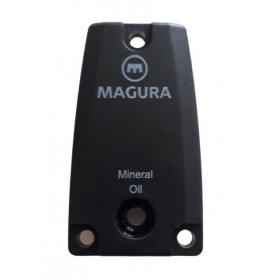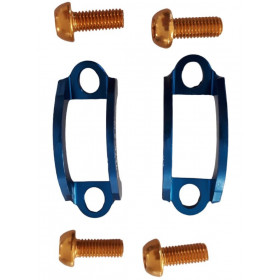 zoom_in
zoom_in
Brake cable
- 6 Items
- New
-
Specific References
- 4524667603115
- 689228603110
€1.35 VAT included
Everything you need to know about bike brake cables: features, specifics, and maintenance tips
The bike brake cable is a key component of the braking system. Often overlooked, it plays a crucial role in your safety and in the responsiveness of your brakes. Whether you're a casual rider or a cycling enthusiast, understanding the features of a brake cable will help you make informed decisions and enhance your bike’s performance.
What is a bike brake cable ?
A bike brake cable is a flexible metal wire, usually made of stainless steel, that connects the brake lever to the brake calipers. It transmits the force you apply at the lever down to the braking system, whether you're using rim brakes or mechanical disc brakes.
It typically consists of an inner cable (the braided steel core) and an outer housing, designed to ensure smooth, durable, and precise braking.
Key features of a brake cable
Here are the main aspects to consider when choosing a brake cable for your bike:
1. Material
-
Galvanized steel: affordable but more prone to rust.
-
Stainless steel: more durable, smoother performance, and corrosion-resistant.
-
Teflon or polymer-coated cables: reduce friction and improve lever feel.
2. Diameter
-
Standard brake cable diameter is usually 1.5 to 1.6 mm.
-
Don’t confuse them with shifter cables, which are thinner.
3. Length
-
Cable length varies depending on your type of bike: road, MTB, hybrid, gravel…
-
It’s best to choose a cable slightly longer than needed to allow room for adjustments.
4. Lever compatibility
-
Some brake cables have specific ends for road levers (pear-shaped) or MTB levers (cylindrical end).
Specifics by bike type
-
Road bikes: prioritize smooth and lightweight cables for precision braking.
-
Mountain bikes: require cables that withstand mud, dirt, and vibrations.
-
City/commuter bikes: focus on durability, especially for bikes stored outside.
When should you replace a brake cable ?
Watch for the following warning signs:
-
Inconsistent tension when pulling the lever.
-
Reduced braking power.
-
Frayed or rusty cable.
-
Difficulty in modulating braking smoothly.
A worn bike brake cable can compromise your safety. It’s recommended to inspect your cables during every tune-up and to replace them every 12 to 18 months, depending on how frequently you ride.
Maintenance tips
-
Regularly clean the visible parts of the cable.
-
Apply a light lubricant to the inner cable for smooth operation.
-
Use end caps on the housing to prevent water or dirt from entering.
Final thoughts
The bike brake cable may be a small component, but it has a big impact. Choosing the right cable for your riding style, brake system, and levers ensures better performance and safety. Don’t overlook the condition of your brake cables—inspect and replace them as needed to enjoy smooth, reliable stopping power every time you ride.






